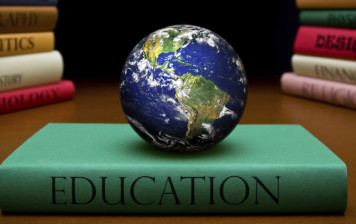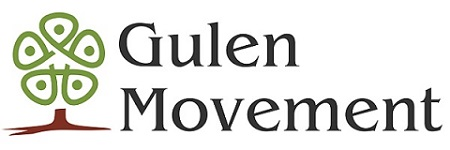
Thomas Michel, S.J.
Members of the Hizmet community hope to change society through a new type of education that draws from and integrates disparate strands of previous pedagogic systems. Gülen’s starting point was his recognition of the need for a new kind of school, a system of education that would draw what was best from the existing alternatives and integrate them into the kind of education needed by modern students. Gülen looked at the kinds of education that were being offered in Turkey in his day. He found that each had some strong point but that each was also lacking in some important areas.
He felt that the secular schools were unable to free themselves of the prejudices and conventions of modernist ideology. On the other hand, the madrasas have limited their efforts to transmitting the religious sciences and have shown little interest or capability to meet the challenges of technology and scientific thought, and as a result, the madrasas lack the flexibility, vision, and ability to break with past, enact change, and offer the type of educational formation that is needed today. The Sufi-oriented tekkes, which traditionally had placed the emphasis on the development of spiritual values, have lost their dynamism. Finally, the educational training offered by the military, which had in previous ages been a symbol of national identity and interior religious energy and activity, has in the course of the past century deteriorated into an inflexible program aimed at self-assertion and self-preservation.
The challenge today, as Gülen sees it, is to find a way in which these traditional pedagogical systems can overcome the tendency to regard each other as rivals or enemies, so that they can begin to work together and learn from one another. By integrating the insights and strengths found in the various educational currents, educators must seek to bring about a “marriage of mind and heart” if they hope to form individuals of “thought, action, and inspiration.” Integration of the interior wisdom, which is the cumulative heritage accumulated over the centuries with the scientific tools essential for the continued progress of the nation would enable students to move beyond the societal pressures of their environment and provide them with both internal stability and direction for their actions. He states: “Until we help them through education, the young will be captives of their environment. They wander aimlessly, intensely moved by their passions, but far from knowledge and reason. They can become truly valiant young representatives of national thought and feeling, provided their education integrates them with their past, and prepares them intelligently for the future.”
From Turkish student initiative to transnational movement
In the new social and economic climate that emerged in Turkey during the presidency of Turgut Özal, the Gülen movement grew from involving a small number of students in a few cities like Izmir to become a huge educational endeavor with important business and political links. Although stemming from a broadly-conceived religious motivation, the schools are not traditional “Islamic” schools, but secular institutions of high quality, as shown by the winning performances of students in science Olympiads and the like.
In the 1980s, the community moved beyond its schools into the media with the publication of a daily newspaper, Zaman, and a television channel, Samanyolu. Today Zaman is published in 20 countries with an average circulation of a half-million. In all, about 35 newspapers and magazines in various languages are projects of the Gülen community. The monthly journal in Turkish, Sizinti, the longest continuously published scientific-spiritual magazine in Turkey, with a circulation over 500,000, has enjoyed uninterrupted publication since 1979; the English version, Fountain, has worldwide circulation in the tens of thousands. The influential weekly newsmagazine, Aksiyon, is a Turkish equivalent of Time or Newsweek. In addition, the community puts out a number of professional journals, for doctors, engineers, teachers etc.
After the fall of communism in the Soviet Union and Eastern Europe in 1989, the Gülen community was a key player in filling the gap in the post-Soviet educational systems. Hundreds of schools and universities were set up throughout the former Soviet republics, both within the Russian Federated Republic – particularly in its predominantly Muslim regions such as Tatarstan, Yakutia, and Chechnya -, in the newly independent nations of the Caucasus and Central Asia, and in the predominantly Muslim and pluralist regions of the Balkans such as Albania, Macedonia, Bosnia, Moldova, Bulgaria and Kosovo. Television programs were prepared, which were destined to be aired in the vast reaches of Central Asia, and scholarships were granted for study in Turkey.
The new century saw a further expansion of the educational activities of the Hizmet community as it moved beyond the boundaries of Muslim-majority regions into China, Western Europe, North and South America, Africa, and Southeast Asia. The primary but not exclusive focus was on educating migrants from Turkey and other Muslim countries. Here the pedagogic approach underwent some adaptation. In many parts of Western Europe, the economic and bureaucratic difficulties of opening and supporting new schools discouraged and often prevented this activity. Moreover, in these regions, the movement often encountered a level of education of high quality. The educational task became not so much one of competing with the existing national public school systems, but that of ensuring that immigrant Turks and others would have an adequate educational background to be able to compete and succeed in the government schools. Thus, in many parts of Western Europe, the Hizmet community in its educational efforts has focused on weekend classes and tutorials aimed at supplementing the instruction given in the state schools and at preparing for standardized exams.
In the schools associated with the movement in the United States, the challenge has been to provide an opportunity for students to attain a high level of academic achievement. In fact, particularly in scientific fields, in states like New Jersey and Texas, schools run by members of the Hizmet movement have been among the most highly awarded. These are not “Islamic schools” in that even though the inspiration for the schools is found in enlightened Islamic ideals; both the teaching and administrative staff and the student body are made up of the followers of other religions as well as of Muslims. In some cases, religious instruction is offered once a week, while in other cases religion is not taught in the schools.
The schools do not form a centralized “school system.” Each school is established and run by individual members of the Hizmet community in a privately registered and funded foundation. The teachers receive a common spiritual training and are sent to wherever the need is considered the greatest, but there is no central governing board that sends out instructions on educational policy, curriculum, or discipline. Rather, each school is “twinned” with a particular city or region in Turkey, which undertakes financial responsibility for the new school.
Gülen’s genius does not lie so much in reinterpreting the teaching of the Qur’an as in applying traditional Islamic prescriptions in entirely new ways to respond to constantly changing social needs. According to the Albanian scholar Bekim Agai; the schoolteacher becomes a prophet who fulfills Islamic principles by imparting knowledge. The key point for Gülen is that the Islamic principles are unchanging, and yet must be given concrete form in each new era. Once, a Qur’an course might have been the best way to invest Islamic donations, but [today] other Islamic activities take precedence. He succeeds in gaining support in conservative Islamic circles for new Islamic fields of action by using traditional Islamic terminology and defining his terms conventionally, but at the same time furnishing them with innovative implications for the present day.
He argues that questions of morality and education are more essential for today’s Islam than are political issues, and that present-day Muslims are confronted with entirely different problems than the question of whether or not to introduce the shari’a.
Source:
Excerpt from the paper “IDENTIFYING OUR PARTNERS IN DIALOGUE” by Thomas Michel, S.J., presented at the conference “Establishing & Sustaining the Culture of Coexistence and Mutual Understanding” on Monday May 28, 2012 at African Union Headquarters in Addis Ababa, Ethiopia.
Tags: Education | Hizmet-inspired schools |Related Articles

Peaceful Muslim–Non-Muslim Co-existence in a Secular Context
Farhod Alimuhamedov This paper is about the conditions of inter-ethnic, inter-religious and inter-class relations in Gülen schools and looks into their operation in non-Turkish and non-Muslim settings. It…

Fethullah Gulen’s educational philosophy as a core value of the Hizmet movement
In many parts of the world, the quality of education provided by Gulen schools is relatively high, especially in the field of physical sciences where high technology laboratories…

Academic excellence and moral values in education: Hizmet Teachers and Gülen-inspired Schools in Urban Tanzania
The role of the hizmet teachers is crucial in order to understand the ideational background of Gülen-inspired schools. Fethullah Gülen distinguishes between education and teaching and stresses the…
